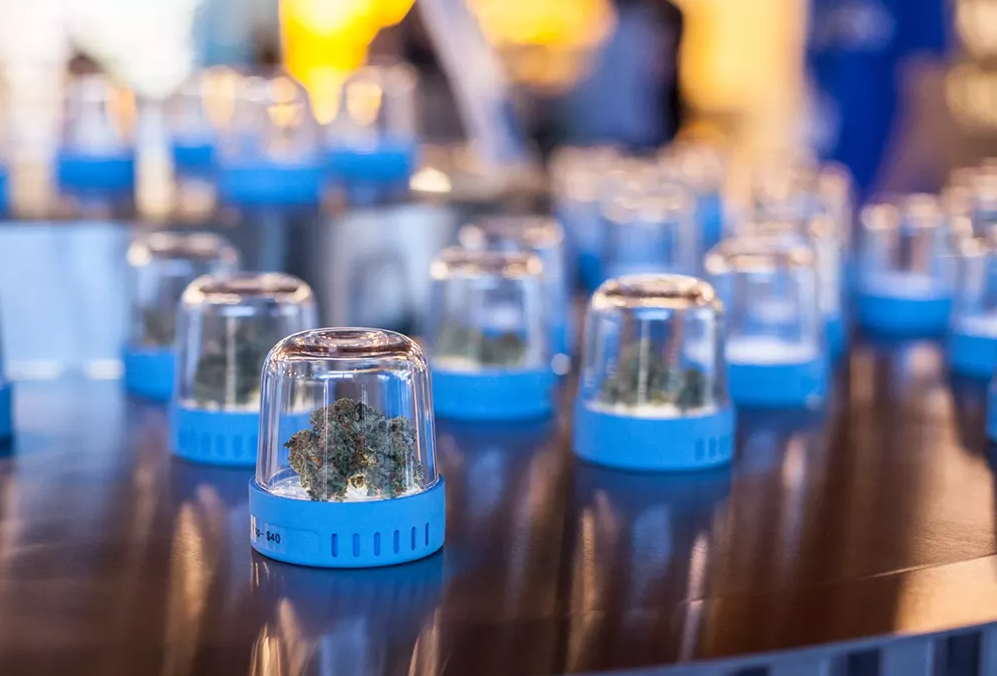
Jacqueline Collins

Audio By Carbonatix
Younger cannabis users may tire of hearing the adage that today’s weed is too damn strong. Indeed, a study from 2021 said the average THC concentration in flower in 2009 was 9.75 percent, compared to 13.88 percent in 2019, according to a peer-reviewed study.
Most Colorado dispensary shoppers have options across the board, and don’t particularly care what the generation before them smoked. However, they do expect that the numbers presented to them in the dispensary are accurate. Nobody wants to buy Marshmallow OG advertised at 29 percent THC, only to find that it really tests at 18 percent. However, that’s often the case in Colorado, one study shows.
A team from the University of Colorado Boulder’s Department of Psychology and Neuroscience and the school’s Institute of Cognitive Science set out to record the accuracy of THC potency labels from products in retail dispensaries across the state. But first, the entire paradigm faced an inherent challenge: No one from the university was allowed to check these products.
“As a federally funded university institution, we can’t have recreational or commercially available cannabis products on campus,” says Greg Giordano, first author on the paper and a researcher at CU. “We can’t handle those products, so we really can’t do this research on our own. We partnered with an industry partner, MedPharm Research.”
Will you step up to support Westword this year?
At Westword, we’re small and scrappy — and we make the most of every dollar from our supporters. Right now, we’re $20,000 away from reaching our December 31 goal of $50,000. If you’ve ever learned something new, stayed informed, or felt more connected because of Westword, now’s the time to give back.
A Denver-based cannabis research company and one of the country’s first facilities to receive a permit from the Drug Enforcement Administration, MedPharm sent a secret shopper out to buy retail cannabis products, including flower, dabbable concentrates and vape cartridges (there were no edibles in this study). The shopper accumulated 178 flower products and 99 smokable or vapable concentrates from 52 dispensaries across nineteen counties in Colorado.
The purchaser would cover up all the information on the label to ensure a blind study, according to Giordano, with MedPharm also handling the testing procedure.
“We did hypothesize we would see potency inflation, particularly in flower products,” Giordano says. “Flower products are more heterogeneous; there are different parts of the plant, so we kind of expect deviations there.”
Similar to Colorado’s Marijuana Enforcement Division testing standards, the analysis allowed a 15 percent tolerance for deviation. The flower tested on average at 21 percent, considerably higher than the 13.88 percent in 2019 – but almost half of the flower samples, 44 percent, failed to test within the 15 percent tolerance allowed, according to the study.
Most of the mislabeled flower had inflated potency, with 54 products testing below what their labels read, researchers found. Another 23 flower products contained more THC than the label indicated.
Potency was much more uniform in the concentrates tested, with the analysis finding only four of the 99 samples labeled inaccurately.
“A cannabis concentrate tends to be more homogenous,” Giordano says, “so we’re less likely to see those [deviations].”
Researchers also looked at how commercial cannabis companies test for and display other cannabinoids, including CBD, CBN, and THCV. Colorado law requires a CBD percentage on the label, but that standard was only met in 80 to 85 percent of cases, according to the study, while only 16 percent of labels had information about cannabinoids beyond THC and CBD.